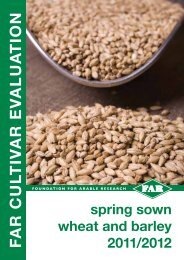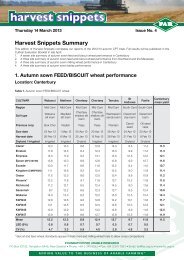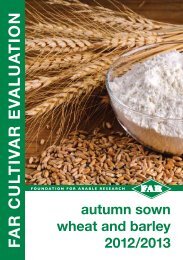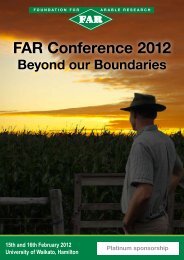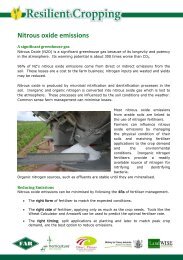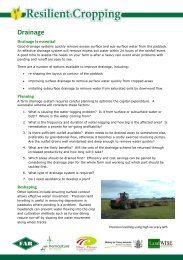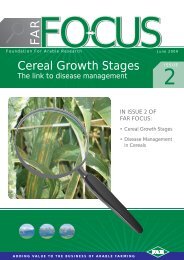Create successful ePaper yourself
Turn your PDF publications into a flip-book with our unique Google optimized e-Paper software.
Great white<br />
butterfly –<br />
what is the<br />
threat?<br />
Autumn sown oats<br />
An evaluation of N responses in autumn sown oats<br />
in Southland found very clear differences between<br />
plots. Previous FAR work on autumn sown oats was<br />
promising and further work on time of sowing in the<br />
autumn is planned.<br />
These projects make up a very small part of FARs<br />
agronomic research portfolio. We also have significant<br />
investment in environmental research (eg see the<br />
managing nutrient losses article) and improving your<br />
farm business (ProductionWise paddock recording<br />
and benchmarking software is freely available <strong>for</strong> FAR<br />
farmer levy payers www.productionwise.co.nz). All these<br />
ideas originated from discussions and consultations<br />
with growers. We look <strong>for</strong>ward to hearing what has and<br />
hasn’t worked <strong>for</strong> you this season, and your ideas on<br />
what you need to know to increase business profitability<br />
and sustainability, so we can invest in the right projects<br />
to deliver benefits to you.<br />
- Nick Pyke, FAR CEO<br />
Brassica seed crop growers should be aware of the arrival of<br />
the great white butterfly (GWB) in New Zealand, but not overly<br />
alarmed by its presence.<br />
The great white butterfly (Pieris brassicae) has been declared<br />
an unwanted organism in New Zealand under the Biosecurity<br />
Act 1993, and FAR is contributing funds to the DoC led<br />
eradication programme.<br />
GWB is a serious pest of <strong>for</strong>age and vegetable brassicas in<br />
several countries, and was first identified in a Nelson garden in<br />
2010. It is a voracious feeder and is capable of causing serious<br />
damage to all types of brassica crops. New Zealand brassica<br />
seed growers should remain in<strong>for</strong>med of GWB’s presence, but<br />
FAR CEO Nick Pyke says there is no need <strong>for</strong> alarm at this stage.<br />
“The arable industry, like all primary industries is deeply<br />
concerned by any biosecurity incursion of this nature, and as<br />
the pest has the potential to affect brassica growers, we are<br />
contributing to the eradication programme. However, there<br />
are two things that growers should keep in mind. Firstly, the<br />
pest is currently contained within the Nelson/Richmond area,<br />
and a large scale project is underway to eradicate it, and<br />
secondly, if it spreads beyond that region, GWB should be able<br />
to be controlled in seed crops with the use of existing pest<br />
management programmes.”<br />
Photo supplied by Entecol.<br />
5





